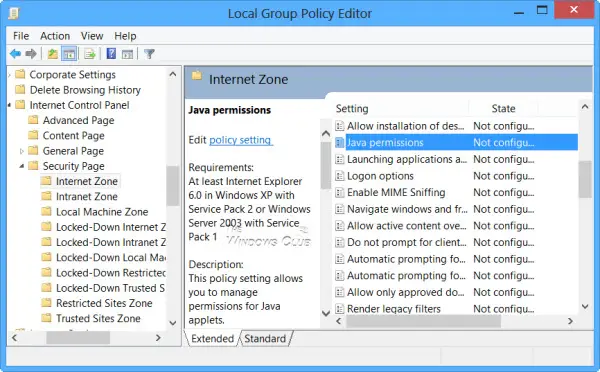Disable Java using Group Policy
To do so, open the Group Policy Editor and navigate to the following setting:
Now in the right pane, you will see Java Permissions. Double-click on it to open its Policy Settings box. This policy setting allows you to disable to manage permissions for Java applets.
If you Enable this policy setting, you can choose options from the drop-down box. Custom, to control permissions settings individually.
Low Safety enables applets to perform all operations.Medium Safety enables applets to run in their sandbox, plus capabilities like scratch space and user-controlled file I/O.High Safety enables applets to run in their sandbox. Disable Java to prevent any applets from running.If you disable this policy setting, Java applets cannot run.If you do not configure this policy setting, the permission is set to High Safety.
Set it according to your requirements, click Apply/OK and Exit.
How do I change Java security settings in Windows 11/10?
It is possible to change or modify the Java settings in Windows 11 and Windows 10 with the help of the Local Group Policy Editor. However, you can make the same changes using the Registry Editor as well. Although the Registry method is not mentioned in this article, you can use this utility by finding the corresponding Registry values.
How do I disable Java options?
You can enable or disable various Java options on Windows 11/10 PC with the help of the GPEDIT or the Local Group Policy Editor. If Java is installed on your computer, you can turn on or off several features or options using Group Policy and the Registry Editor. For that, you need to navigate to this path: Computer Configuration\Administrative Templates\Windows Components\Internet Explorer\Internet Control Panel\Security Page\Internet Zone. That’s all! Hope this guide helped.
